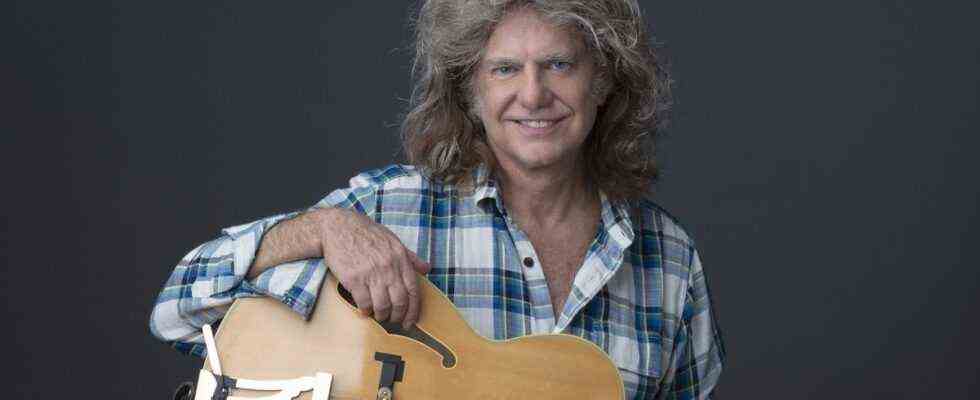In jazz there were religious wars against which the arguments between Beatles– and Stones-Fans looked like pure banter. Should you understand the saxophone in the spirit of John Coltrane or that of Sonny Rollins? Was Dizzy Gillespie on the trumpet on the path of truth, or was it Miles Davis first? A similar gap is currently opening up among jazz guitarists. The currently dominant ideal is an almost monastic clarity, with Wolfgang Muthspiel, for example, with John Scofield and above all with Julian Lage, whose game many consider to be the gold standard of the present.
The Californian has brought his sound to such a pure minimum that you always get the impression that he himself has rubbed away the natural distortions of the electric guitar. For a long time he played a Fender Telecaster, with which rock guitarists like Keith Richards, Bruce Springsteen or Jimmy Page made it clear in the sound that everything they do is just a variation of Muddy Waters. In the meantime he is playing a custom-made product that was built for him by the Collings company from central Texas and which already looks as if the last seventy years of music history had passed without a trace. That’s what it sounds like. Pure and pure and ultimately such a musical Protestantism is just as krafmeier-like as the material battles and clouds of sound of so many guitarists. With every piece of jewelry, Lage can radiate his whole charisma as a musician, which makes him unique without question.
The counterpart, pure baroque full of overwhelming moments of beauty and magnificence of sound, is the music of Pat Metheny. He never made a secret of his addiction to harmony and his extravagant chimes. After an overall very successful experiment with a full string orchestra on his last album “From this Place” and an excursion into classical composition on “Road to the Sun”, he performs with his new trio project on the live album “Side- Eye NYC (V1.IV) “(Modern Recordings) suggests that this tendency to baroque has little to do with studio technology and a lot to do with his sense of sound images that are as large and expansive as the sky over the prairie of his home Missouri. No wonder he found a congenial counterpart in the young keyboardist James Francies from Texas. Certainly the two are not afraid to get the maximum amount of sound out of modern technology. Has never had Metheny, who left no stone unturned from the guitar synth to the orchestrion. To achieve this in otherwise puristic music like jazz is of course brilliant. But that wouldn’t work if the two didn’t know how to play a chord without such timbres in such a way that the very big sky opens up.
And then of course there are reconcilers in these religious wars like Bill Frisell, who can apparently unite all these schools and ideals. He’s so productive and so much in demand that you only need your own column about your work. On his last own album “Valentine” (Blue Note) he came very close to his goal of playing American music that no longer knows any boundaries between folk, pop and jazz. Burt Bacharach or “We Shall Overcome” as introspections? Not everyone can be so confident. But if he can rub himself against a genius, he comes back to form in a completely different way. With the saxophonist Charles Lloyd, for example, whom he is in his group The Marvels stand by. Lloyd is also looking for the true America, at least since he played the hippie youth into ecstasy as a jazz exotic among rock stars in the sixties. So far, people like Lucinda Williams, Norah Jones or Willie Nelson have always been invited to sing for the Marvels albums. Without singing, on “Tone Poem” (Blue Note) it is not always easy to hear, but it does lead you much deeper into American music. And then in the last instance it allowed everything. The asceticism, the debauchery, the ecstasy and everything in between.

